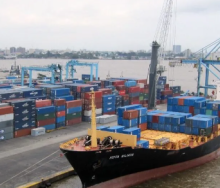The container market has encountered significant challenges due to lower-than-expected growth in the global economy, confirming the impact of the coronavirus pandemic and the lockdown of global markets in the last four-year period.
On the one hand is market growth that has been well below projections.
But the ratio of market growth to economic growth, known as the GDP multiplier, has also been notably lower than usual. Stat Media Group reports.
This trend has raised concerns within the industry about the overall health and resilience of the container market.
According to a report by the International Monetary Fund (IMF) in October 2019, the global economy was anticipated to expand at an average annual rate of 3.5% between 2020 and 2023.
This forecast was in line with the average annual growth rate of 3.4% observed in the years leading up to the pandemic.
However, the latest update from the Baltic and International Maritime Council (Bimco) reveals that the global economy fell short of these expectations, achieving only a modest average annual growth rate of 2.6% during the specified period.
This unexpected slowdown in global economic growth has had a direct impact on the container market, leading to challenges in meeting projected growth targets and affecting the overall performance of the industry.
Stakeholders in the container shipping sector are now faced with the task of navigating these turbulent waters and adapting their strategies to the evolving economic landscape.
The implications of this economic slowdown on the container market are significant, requiring industry players to reassess their business models and operational strategies to remain competitive in a challenging environment.
As the global economy continues to recover from the effects of the pandemic, it will be crucial for stakeholders in the container market to monitor economic trends closely and make informed decisions to mitigate risks and capitalise on emerging opportunities.













